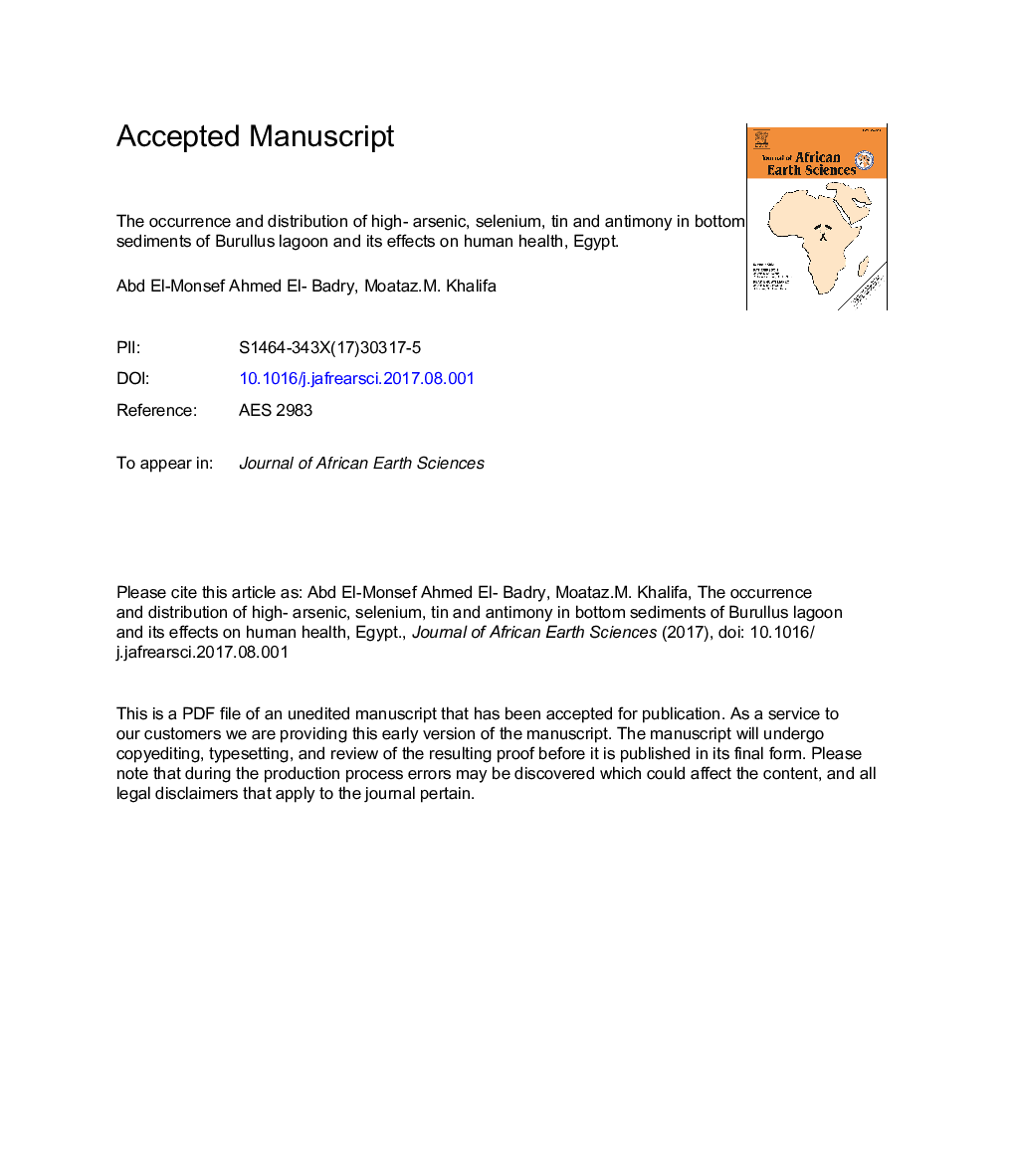| Article ID | Journal | Published Year | Pages | File Type |
|---|---|---|---|---|
| 8913764 | Journal of African Earth Sciences | 2017 | 23 Pages |
Abstract
Burullus lagoon is one of four natural water bodies known as northern Egyptian delta lakes. The lagoon extended maximum long of 53 km long and maximum width 13 km with an area about 420 km2. The pollution of bottom sediment of the Burullus lagoon is indicative of both water and food web quality in general. A few research were carried out related to study of arsenic, selenium, tin and antimony. The main objective of this study is assessment of environmental effects of arsenic, selenium, tin and antimony metals, twenty-one samples were collect from bottom sediments sample among sites covering the Burullus Lagoon during summer 2014, and analyzed by using simultaneous inductively coupled plasma emission spectrometer. The contamination with these metals was evaluate by applying index of contamination factor (CF) and geoaccumulation (Igeo). The relative order of abundance of the potentially toxic metals in the lagoon's sediment is Se > Sn > Sb > As The territory around inlet and southeastern drain show considerable pollution by the studied toxic metals. The main reason for such pollution resulting from industrial activities and agricultural drains. The disregards of the anthropogenic activities are the main reason of pollution in the studied lagoon. Construction of special units for treatment and purification of all types of drainage and wastewater (agricultural, industrial). Successive analysis of lake water to assess the amount of pollutants to make suitable decisions. Take an action to prohibit throwing of wastes in the lagoon. Consumption of the lake water for agricultural and industrial must be under control in order to decrease water pollution.
Related Topics
Physical Sciences and Engineering
Earth and Planetary Sciences
Geology
Authors
Abd El-Monsef Ahmed El-Badry, Moataz M. Khalifa,
